Google Nexus 6 Review
Why you can trust Tom's Hardware
Battery Life And Thermal Throttling
Battery life may be the most important performance metric for a mobile device. After all, it doesn't matter how quickly a phone or tablet can load webpages or how many frames per second the GPU can crank through once the battery runs down and the device shuts off. To learn more about how we test this critical facet of mobile computing, please read our battery testing methodology article.
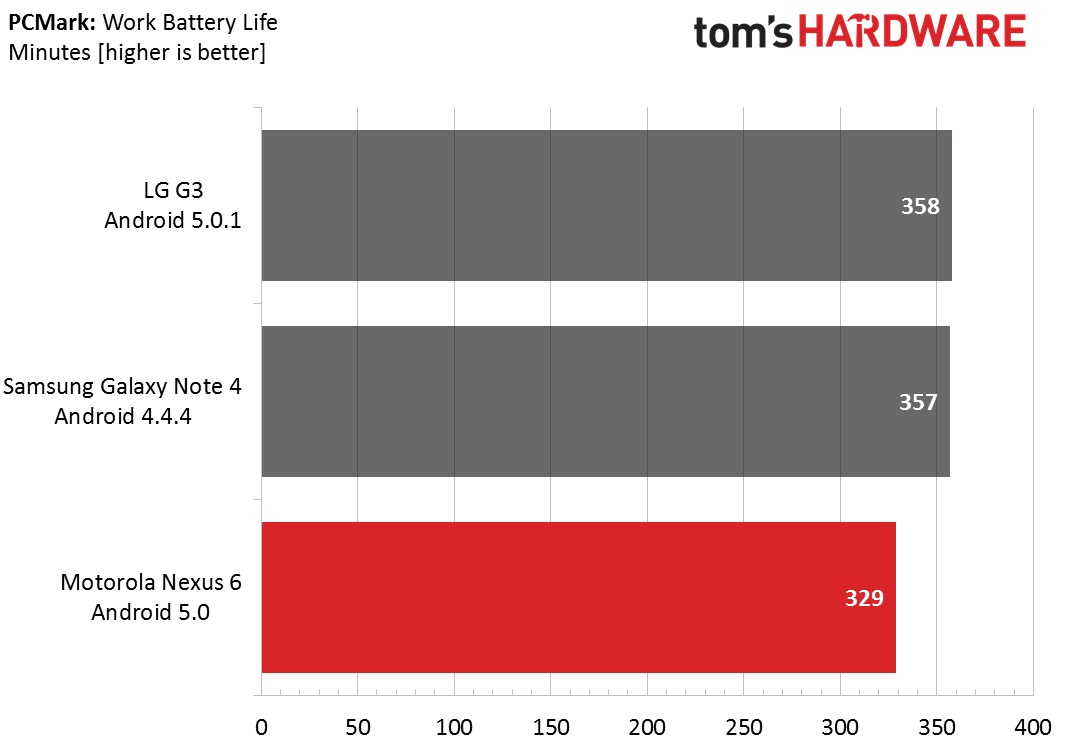
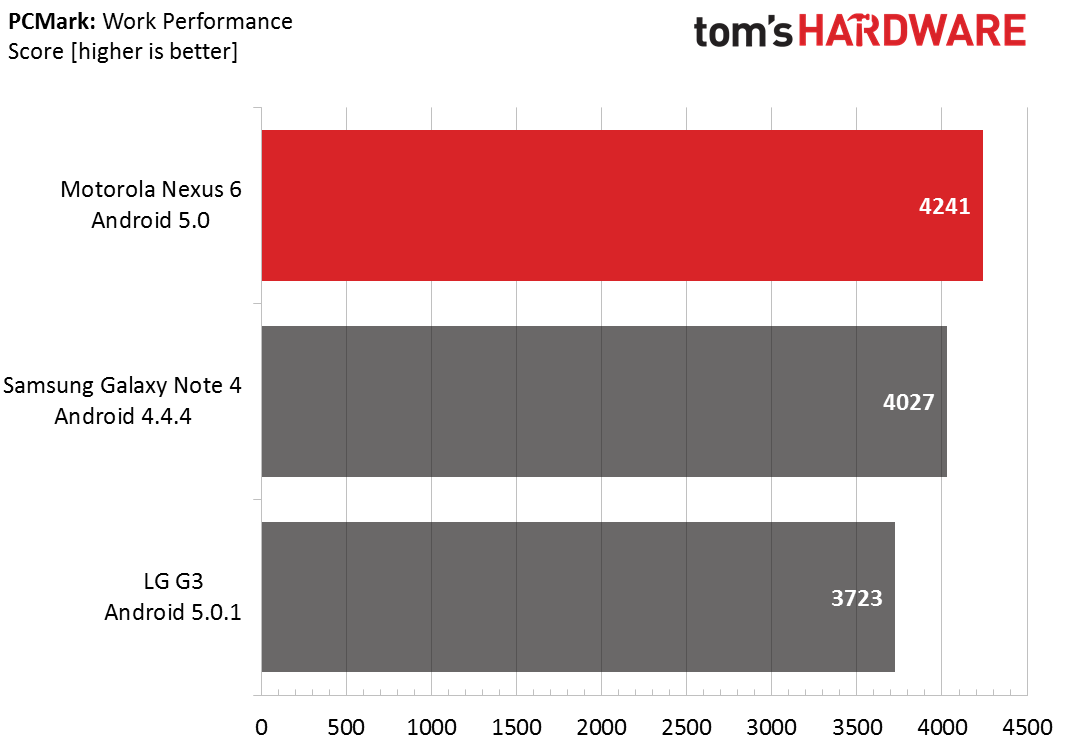
The Nexus 6 runs this real-world workload for 5.5 hours. But despite having the same SoC and the same size battery as the Note 4, it runs out of power thirty minutes sooner. Its 5% performance advantage won't be noticeable and does not make up for the 9% battery life deficit.
Normally, we would turn to the Basemark OS II Battery test to see how CPU performance affects battery life. However, the results for the two Snapdragon 805-based devices look suspect, so we're withholding them pending further investigation.
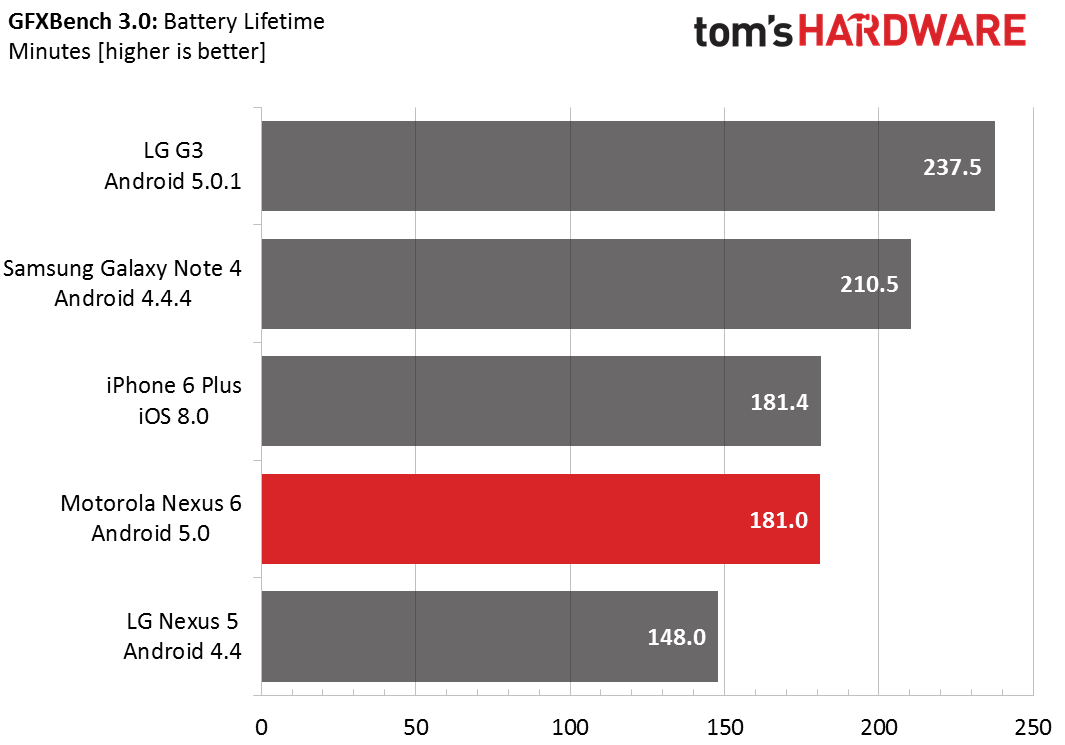
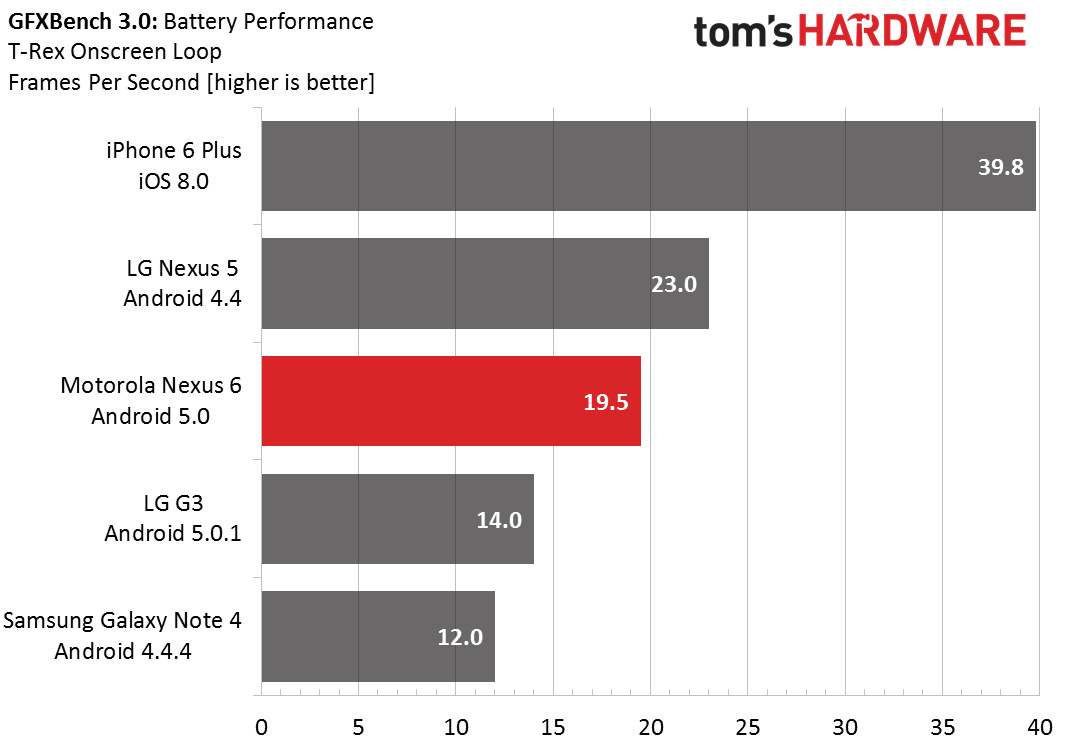
The Nexus 6 will hold out for a three-hour gaming session, the same as the iPhone 6 Plus and one-half hour longer than the Nexus 5. It would appear from the first chart that the Note 4 offers better battery life while gaming, since it outlasts the Nexus 6 by almost 30 minutes. But looking at the performance chart tells the other half of the story. The Note 4 lasts longer only because thermal throttling forces it to reduce GPU clock rate more than the Nexus 6. The iPhone 6 Plus and Nexus 5 also have fewer pixels to render for this on-screen test, which improves both their performance and battery life.
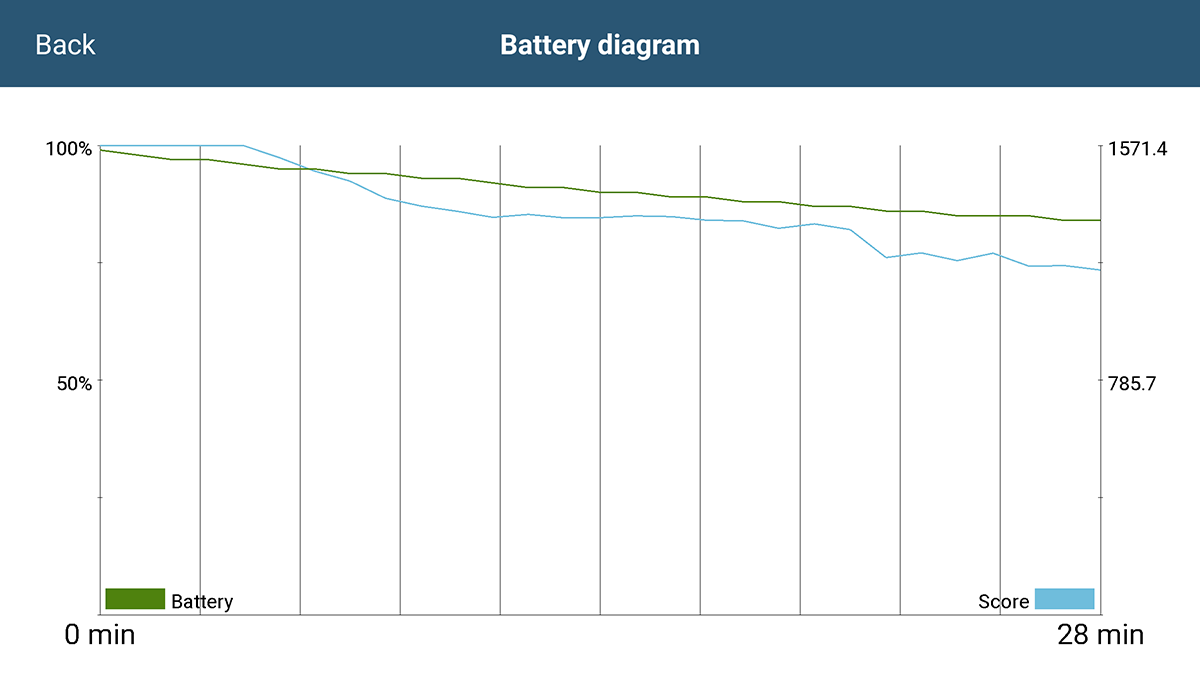
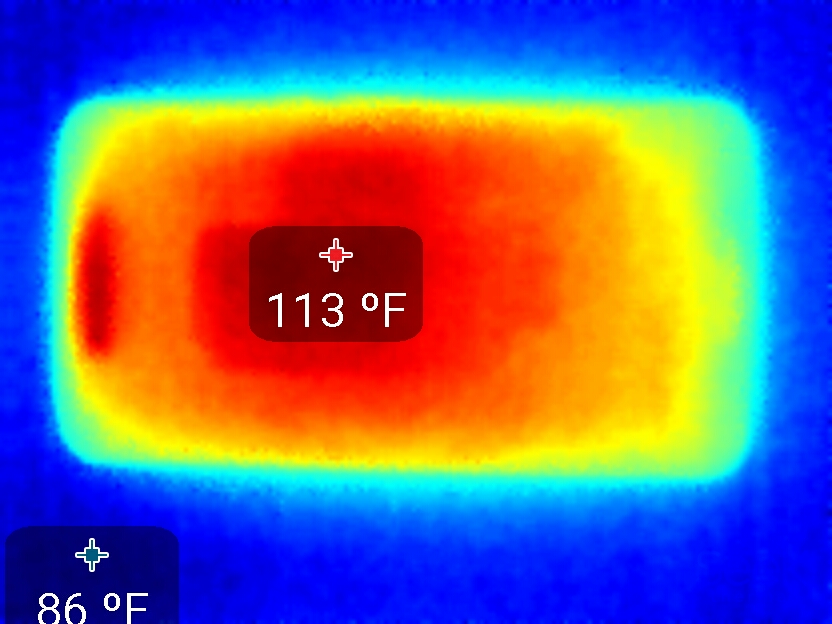
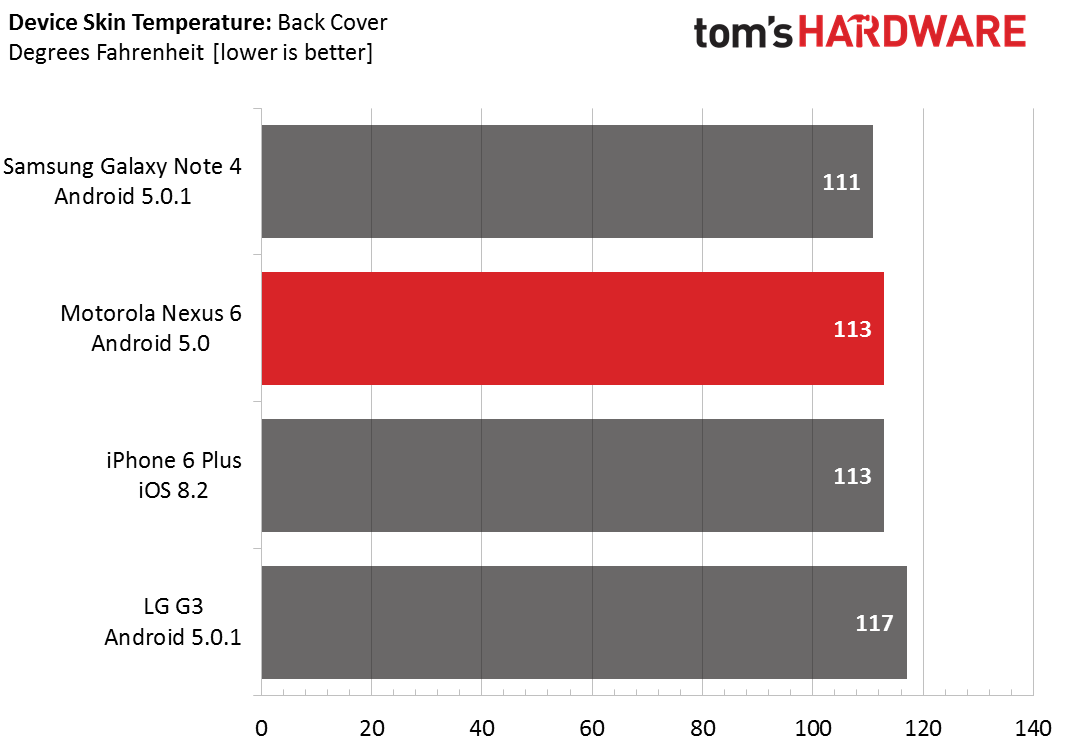
Looking at the graph above, we see that the performance of the Nexus 6 gradually decreases to about 75% of its original value during the roughly 30-minute T-Rex loop. While not immune to thermal throttling, it does fare better than the Note 4, which loses over half of its performance 8.5 minutes into the test before recovering to about 70% of the original value over the last half.
The Nexus 6's back cover skin temperature reaches 113 °F, certainly warm but not uncomfortable and about average for this group. Looking at the thermal image of the back cover, taken during the GFXBench 3.0 Battery test, shows why the Nexus 6 throttles less than the Note 4. It more evenly spreads the heat load over it's whole chassis, using the larger surface area to better dissipate heat buildup to its surroundings.
Battery life for the Nexus 6 is not bad, at least compared to the Note 4. In PCMark, the Nexus 6 trails by about 9%, which coincidentally, is almost equal to the difference in screen area between the two devices.
Get Tom's Hardware's best news and in-depth reviews, straight to your inbox.
Current page: Battery Life And Thermal Throttling
Prev Page GPU And Gaming Performance Next Page Conclusion-
MobileEditor ReplyWhy wasn't the S6 used in this comparison?
Primarily because of the difference in screen size. If someone is considering a 6-inch phone, they probably are not interested in 5-inch phones. Thus, we compared it to other devices with a 5.5-inch or larger screen (and the Nexus 5 just because it was the previous generation).
- Matt H. -
Desertlax I think there is a typo about price, the nexus 6 is listed as 649 and 699 on the play store, not "starting at $750".Reply -
Tanquen I don’t know if Google lowered the price or when but it’s been $649 for the last week or so that I’ve been thinking of buying it. So I don’t get the repeated complaint that the price is $750 and too high. ???Reply -
MobileEditor ReplyI think there is a typo about price, the nexus 6 is listed as 649 and 699 on the play store, not "starting at $750".
Thanks for pointing this out. The article has been updated to reflect the current pricing.
- Matt H. -
Stryfex Did I hit my head and go back in time by like 6 months? Why is toms hardware posting reviews of the Nexus 6?Reply -
rtfizzel The Nexus 6 camera does have OIS. At least it is listed as a feature by Google and many other reviews.Reply
https://www.google.com/nexus/6/ -
rtfizzel My bad, misread. Apologies.ReplyThe Nexus 6 camera does have OIS. At least it is listed as a feature by Google and many other reviews.
https://www.google.com/nexus/6/ -
Chillyblue I have owned my N6 since it came out. Unlike others, I ordered it on release date, and got it five days later.Reply
By now long discussions about his big it is are redundant and moot. Those who purchase the phone known that, and like the screen real estate. Size is a preference they choose. If someone wants a smaller screen, they have unlimited options. To be honest, one become quite accustomed to the size rather quickly.Enough about size. Oh, it fits perfectly into my Levi Strauss jeans back pocket.
This phone since upgrading to 5.1 is a lightening fast. I run stock rooted with Franco Kernel. Antutu benchmark is 55,000 and Gerebench is 1200 single core, and 3600 multiple. I've run both encrypted and unencrypted... and frankly I csntvdetect any difference other than a faster boot time.
The build quality is excellent, the screen accurate and detailed, the camera gets the job donecwith clarity and definition....if you use a different third party camera app the results get better.
I've owned a HTC M8, and a Samsung note 3. Touch Wiz sucks, and bulild quality was toy like. HTC M8 offered excellent build quality and sense is far less intrusive then touch wiz.
Personally, pure Android, a bigger screen, faster updates, excellent build quality all make this phone a winner.